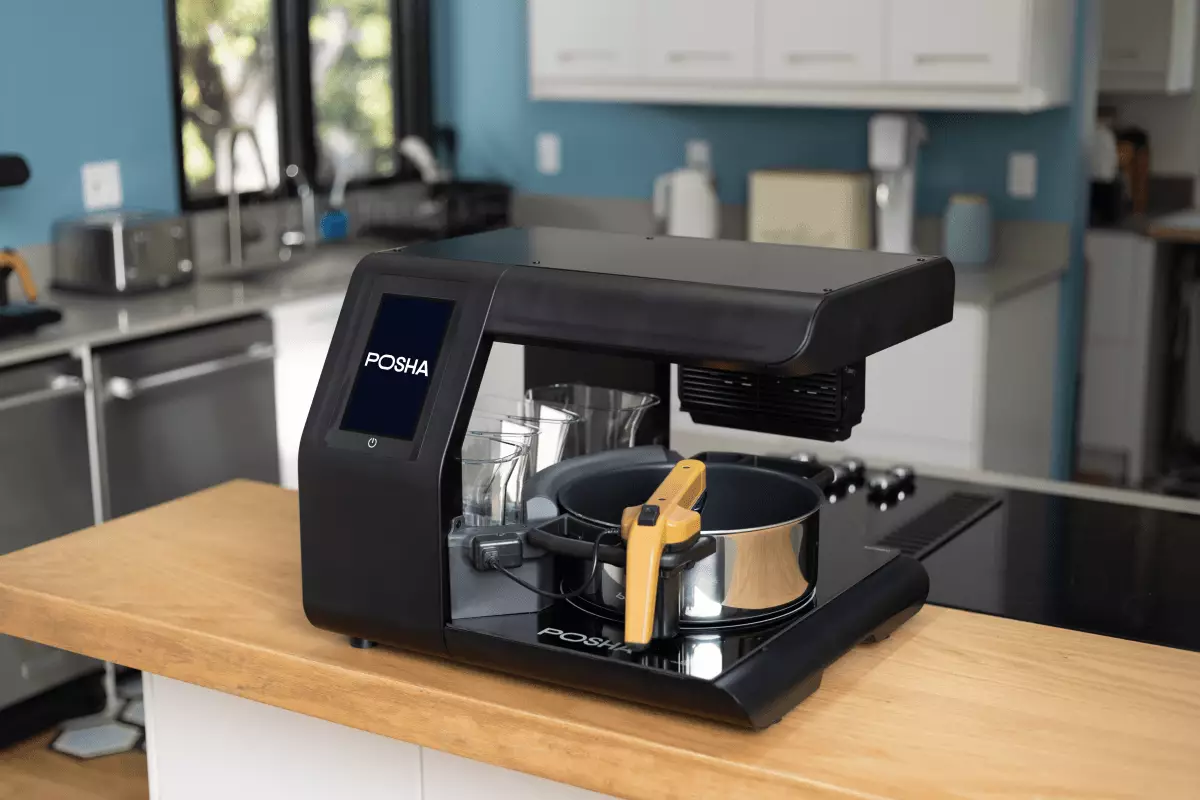In an era where convenience reigns supreme, Raghav Gupta’s vision for Posha represents a paradigm shift in home cooking. Faced with the everyday dilemma of time-crunched meal preparation, Gupta sought to bridge the gap between the desire for home-cooked meals and the logistical challenges that hinder them. By harnessing robotics and computer vision, Posha creates countertop culinary assistants designed to simplify the cooking process—not replace the art of cooking entirely, but to enhance it with modern technology. This approach speaks not only to the current trends of automation but also to the underlying human desire for connection through food.
However, it’s prudent to note that while Posha simplifies meal preparation, it does not entirely eliminate the active participation of the user. Unlike a microwave that requires merely the push of a button, Posha insists its users engage hands-on with basic ingredient preparation. This aspect may deter some potential users who are looking for a complete automation solution. Gupta himself acknowledges this realistic constraint, indicating that Posha appeals more to those already inclined to cook, rather than those seeking a total removal of cooking tasks from their daily responsibilities.
Understanding the Target Audience
Posha’s design and user interface seem tailor-made for a specific demographic—those who currently cook on a regular basis but want to reserve significant time and effort. By focusing on consumers who already dedicate time to meal preparation, Gupta effectively eliminates the risk of alienating the non-cooking populace. Instead of marketing a dishwashing-like machine targeted at disinterested consumers, Posha optimally serves a market segment engaged with culinary art.
Gupta’s business strategy hinges on efficiency. He claims that Posha users can reduce their cooking time by at least 70%, freeing up as little as 10 to 20 minutes per day for other activities. In a world dominated by time scarcity, particularly for working individuals or families, this is a powerful selling point. Fittingly, it recognizes that, at the core of a successful culinary solution, lies understanding the user’s needs, preferences, and cooking habits.
Customer-Centric Development and Feedback Loops
One of the most notable aspects of Posha’s growth strategy is its unmatched commitment to customer feedback. Unlike many tech companies that get ensnared in impersonal customer service platforms, Gupta opts for direct communication through WhatsApp, maintaining close ties with the consumer base. While traditional business practices might scorn this method due to scalability issues, it effectively cultivates customer loyalty and ensures that product iterations meet authentic user expectations.
By embedding itself deeply within the user experience, Posha benefits from rapid adaptability. The ability to receive real-time feedback allows for agile product development—transforming user suggestions into actionable improvements. Gupta’s move to the U.S. in light of the pandemic further illustrates his hands-on approach and earnest dedication to user satisfaction. The personal touch in this digital age can often be overlooked, but Posha showcases how maintaining such relationships can significantly contribute to brand authenticity.
Funding and Future Prospects
The recent $8 million Series A funding round, led by Accel and including notable investors like Binny Bansal, signifies a robust vote of confidence in Posha’s vision. This capital influx is not merely for operational costs; it’s a strategic step towards expansion. Gupta’s aim to integrate generative AI to enhance recipe offerings showcases a forward-thinking approach to home cooking.
Looking ahead, the potential for customization lies not just in the existing recipes but in the ability for customers to suggest their own culinary ideas. This would create a unique ecosystem where users aren’t just passive consumers but active contributors to Posha’s recipe database. If realized, this would mark a significant leap in how individuals perceive their relationship with food, transforming from mere consumers to co-creators.
In a market filled with tech solutions that often overpromise and underdeliver, Posha offers a balanced approach—melding technology with the innate practice of cooking. Whether or not this innovation will lead to the same indispensable status as fridges and microwaves remains to be seen. However, one thing is certain: Posha is carving out a meaningful niche in a cluttered space, turning the kitchen into a modern, efficient environment for culinary exploration.

